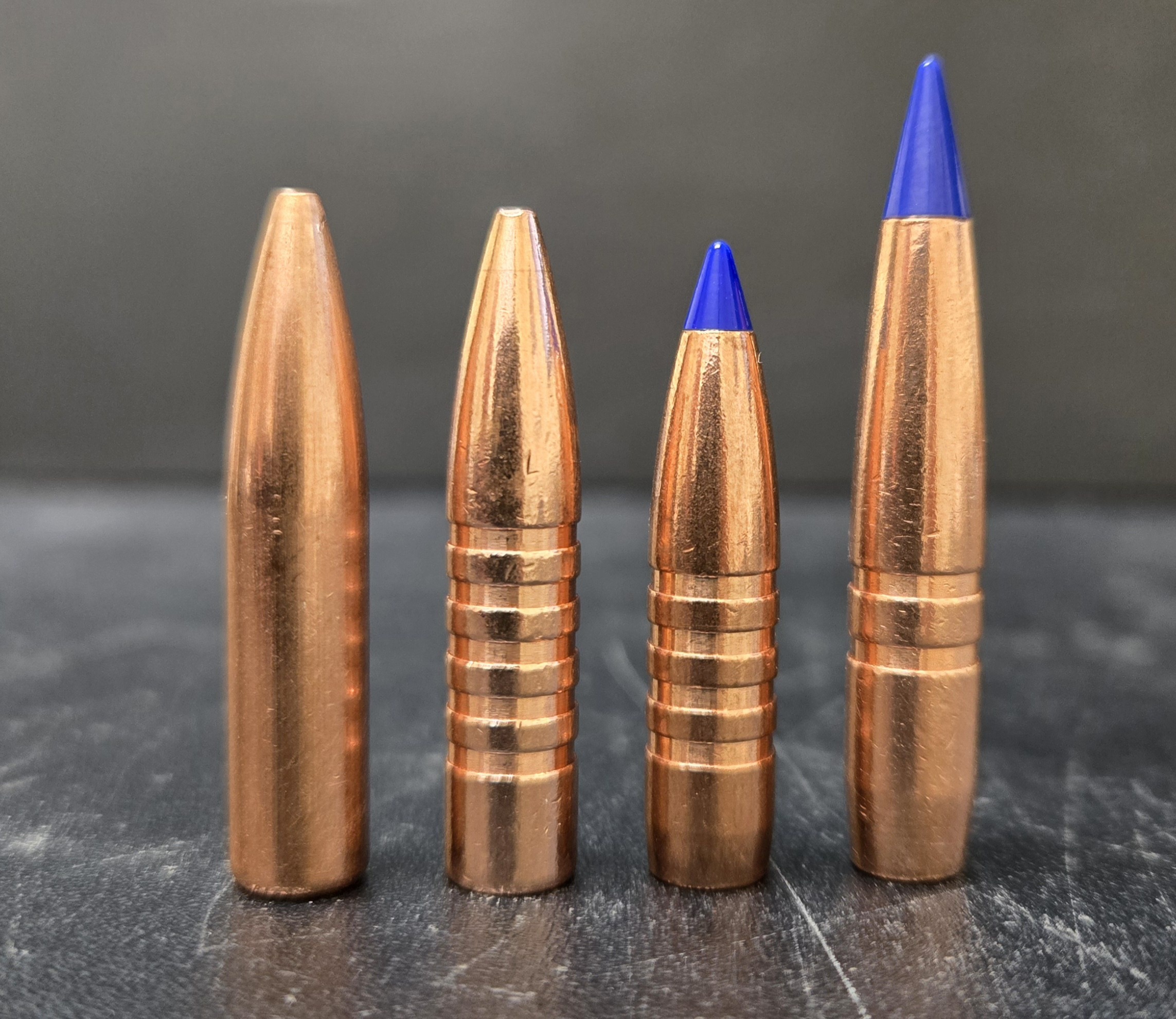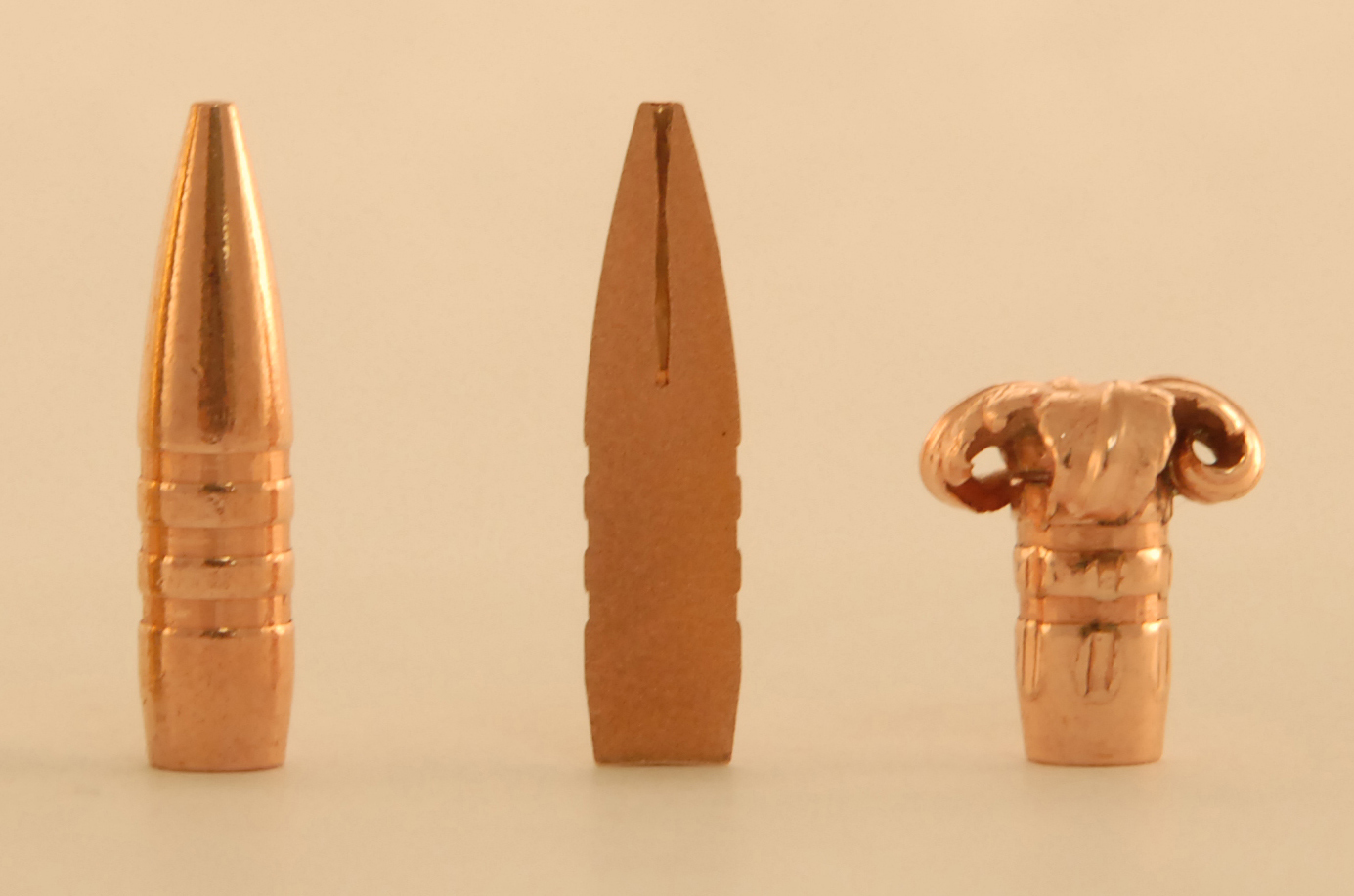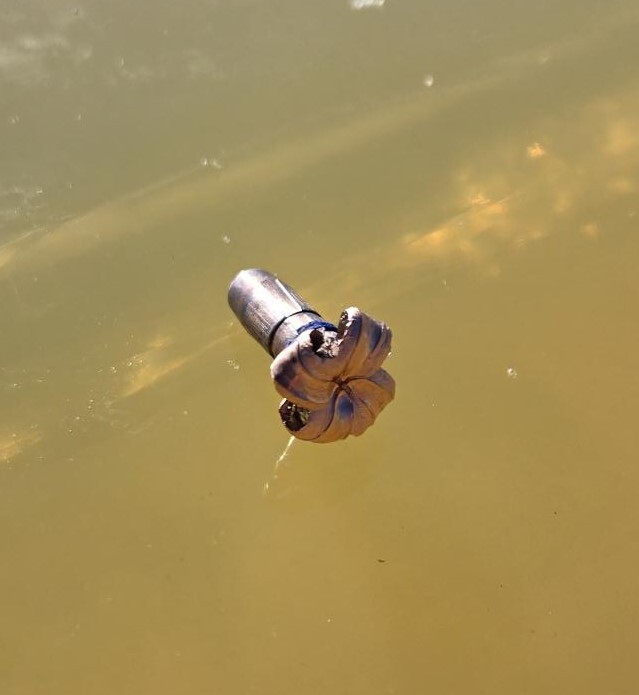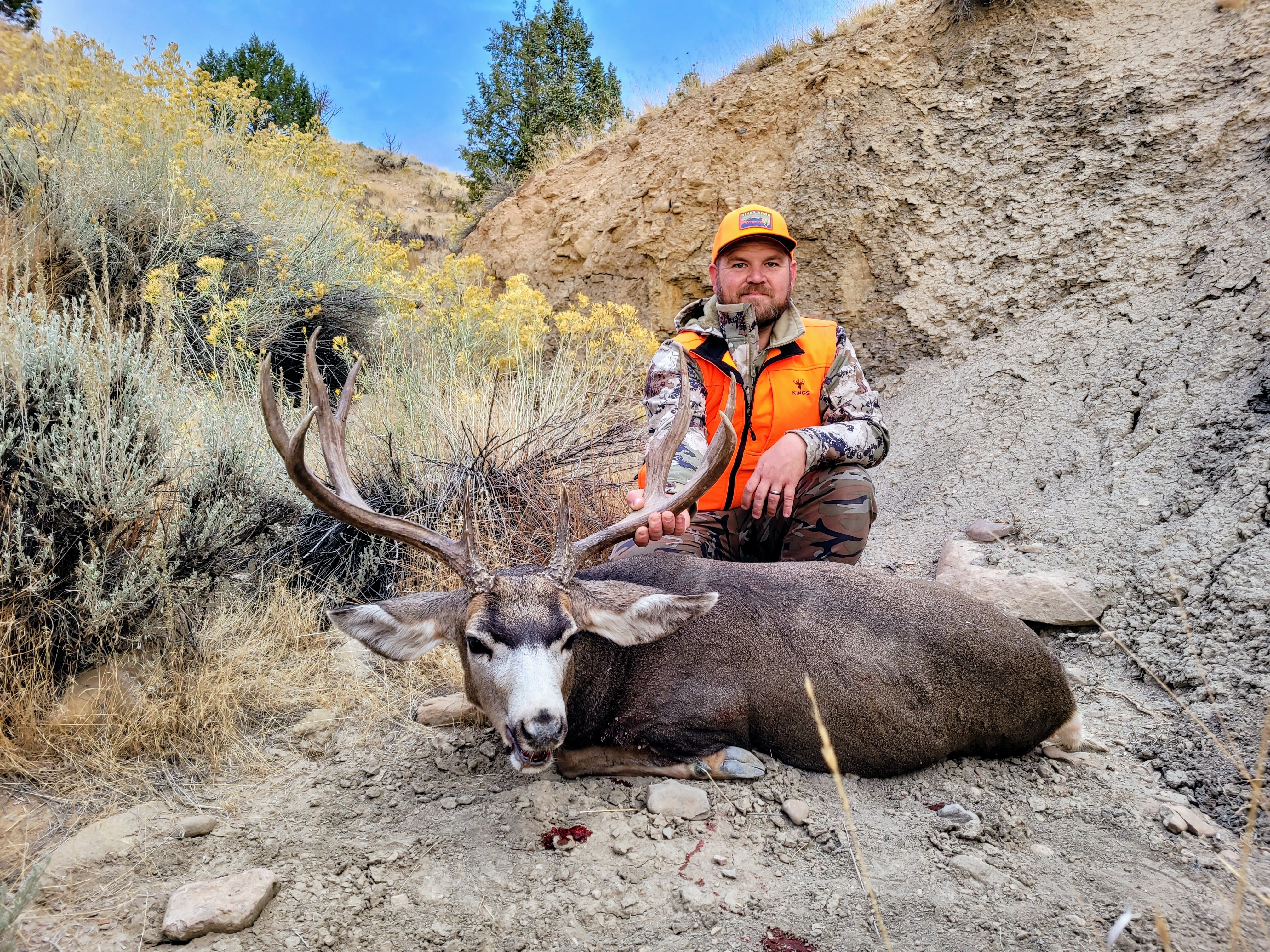How To Pick The Best Hunting Bullet For You
Posted by Gregg Sloan Apr 3rd 2025
“Which Barnes bullet should I shoot?” or “What makes an LRX different from a TTSX?” or ”I’ve hunted with TSX bullets in the past but never tried a TTSX or LRX.” These are some questions and statements that we hear and get asked here at Barnes.
In this post, I will explain why each bullet exists, what makes each of them unique, some of their performance characteristics for each design, and why an end user would select one over the other for the given application.
To start, let’s take a quick look at the history of the Barnes all-copper X bullet. In 1989, Barnes introduced the first all copper hunting bullet on the market: the original X bullet. It was designed by Randy Brooks, then owner of Barnes Bullets. Up to that point, Barnes manufactured and offered thick copper jacketed lead core bullets in the Barnes Original line (some of which are still offered today). While these are good bullets and have their place, Randy wanted something more.
He was looking for a way to get better terminal performance on large game. He had experience with the lead core hunting bullets on the market at that time, and he was aware of and had experienced firsthand some of the shortcomings of those bullet types. He wanted a bullet that gave consistent, reliable expansion or “upset” yet held together, maintaining the ability to penetrate deep and track straight. This can be crucial when thick hide and heavy bone come into play, as well as the need to reach the vitals regardless of shot angle. He came up with the idea of an expanding “solid.” He wanted a bullet that had high weight retention, even at high velocity impacts, but also expanded and created large wound cavities. He wanted a bullet that would penetrate deep and reach vitals even on large game.
His idea was to remove the lead core entirely, thus eliminating the problem of jacket-core separation. The Barnes solid copper X bullet was born: a monolithic solid copper bullet with an internal nose cavity. Over the years, there have been updates, design improvements, and changes to meet the needs of today’s hunters. As the X bullet evolved, new designs were introduced to the market over the years. This brings us to today, as Barnes offers three main lines of solid copper bullets: the TSX, TTSX, and LRX.

Example of various Barnes copper bullets. L to R: X, TSX, TTSX, LRX.
The TSX
The Barnes TSX bullet was the first big step forward in design and improvements from the first X bullet. One of the issues with the X bullet was that it had a high bearing surface, which means that a lot of material contacts the bore and riflings. This can build higher pressures and increase fouling when compared to traditional jacketed lead core bullets. The TSX solved this problem with the addition of relief cuts or grooves on the bullet shank.
The TSX grooves cut into the bullet shank, remove material, reduce bearing surface, and allow the copper to displace as it contacts the rifling. Added benefits are reduced chamber pressure, which allows normal velocities to be obtained for a given cartridge and bullet weight. Accuracy is another big benefit. We have found through testing that many times the TSX grooves actually improve accuracy, sometimes dramatically. Copper fouling is also reduced with the added grooves.
The TSX bullet is designed to expand instantly upon impact. These are controlled expansion bullets with hydraulic driven nose cavities. As fluid (soft tissue) enters the cavity, the bullet expands into four sharp petals. The result is a sizable frontal area that creates a large wound cavity. The expanded, sharp petals cut and tear tissue and organs as the bullet rotates and penetrates through the animal. The TSX bullet is designed to retain 99-100% of its original weight. This mass helps the bullet continue to drive deep and penetrate.

Photo of a TSX, a sectioned TSX, and an expanded TSX.
TSX bullets are known for excellent terminal performance and good accuracy. They are available in a wide variety of calibers and offered in both boattail and flat base versions.
Generally speaking, the TSX is a great choice for all big game hunting. Depending on the caliber, bullet weight, and cartridge used, this is a good rule to follow for TSX bullet expansion, weight retention, and range expectations:
- 100% weight retention at high velocity.
- Good bullet expansion from up close to 300 yards (cartridge dependent)
There are always exceptions, and some TSX bullets are optimized for a specific cartridge and longer range use. A good example of this is the 0.284” 162gr TSX BT we load in the 28 Nosler VOR-TX ammo.
The TSX is a proven design and has a large, loyal fanbase. It’s a great option for big game hunting including the African variety, Western Big Game, as well as the big bears and game up north. The TSX bullet has been proven around the world.
Another area and application where it shines is in smaller calibers and cartridges. You don’t have to be hunting Cape Buffalo with a 300gr TSX in a 375 H&H to enjoy the benefits of a TSX bullet. One example is the TSX bullets in the 0.224” family. They are amazingly effective. They can be pushed hard and fast, without the fear of jackets ripping apart in bore or bullets exploding on impact. They work well even on small and thin-skinned game.
They are an awesome choice for predators, hogs, and small deer-sized animals such as Pronghorn and even Whitetail. The TSX will open up instantly on a coyote, yet hold together and drive deep, allowing a cartridge to act bigger than it is. This makes it a great choice if you are stretching the limits of a cartridge and its intended application.
Lastly, not hunting related, but the TSX has also been used with great success in the M/LE and defense markets. It is a tough bullet that can break through barriers and still reach the target on the other side–doing mean, massive damage when it does.
The TTSX
The TTSX was the next big step in the Barnes copper bullet evolution. The main difference between a TSX and a TTSX is the addition of the polymer tip. This increases the BC (Ballistic Coefficient) which helps the bullet retain velocity down range and is less affected by the wind.
The tip can also help initiate expansion. Overall, we do not see drastic differences in bullet expansion and on game performance between the TSX and TTSX bullets out to around 200 yards. As the distances get further out, that is generally when you can see the added benefits of the tip on the TTSX bullet. As the velocity slows down, the TTSX bullet will expand to a larger diameter when compared to the TSX of the same caliber and weight.
The TTSX bullet is a great all around choice. Most of the time, if I am recommending a product to a new end user, and they have never tried a Barnes copper bullet before, I have them go with a TTSX. They are also available in many choices of caliber and weights. While most TTSX are a boattail design, there are a few in the line with a flat base.
The TTSX is another great choice for all big game hunting. Depending on the caliber, bullet weight, and cartridge used, this is a good rule to follow for TTSX bullet expansion, weight retention, and range expectations:
- 90-100% weight retention at high velocity.
- Good bullet expansion from up close to 500+ yards (cartridge dependent)
Again, there are always exceptions. Some of the TTSX bullets are made very optimized and for a specific cartridge. Most will expand down to around 1800 fps in our water tank test. I generally recommend keeping impact velocities around 1900-2000 fps and above for hunting use.
Accuracy is another area worth noting. The TTSX bullets are incredibly accurate. We do a lot of testing in the Barnes Ballistics Lab, and I can say from many years worth of tests and comparisons to other bullet types and makes, these bullets flat-out perform. They are generally easy to load and are very forgiving.
The TTSX does all the TSX does and a little more. Depending on what your application is, it may be the best option for you.

Photo of a .338” 225gr TTSX
The LRX
The LRX represents the pinnacle in the Barnes X evolution. The goal was to take all the benefits of the TTSX and push the design envelope as far as we could go. The LRX bullets feature longer, sleeker ogive profiles, long boattails and fewer grooves cut in the shank. All of this gives them a high Ballistic Coefficient for long range performance. Some of the flagship, newer offerings in the LRX line also have a very large tip, which aids in the aggressive profile and leads to class-leading BC’s.
The same copper material is used on the LRX as the TSX and TTSX bullets. The LRX is not a softer material. They do however have re-engineered nose cavities and profiles made specifically to expand to large diameters even at low velocity and longer shots. The function window on the LRX has been engineered to ensure good expansion at lower velocity.
When it comes to terminal performance, the LRX can give the best of both worlds. It expands fast and rapidly upon impact, creating a large wound cavity, while also maintaining weight and penetrating deep to reach vitals even on large game and regardless of shot angle.
The LRX is a great choice for all big game hunting. Depending on the caliber, bullet weight, and cartridge used, this is a good rule to follow for LRX bullet expansion, weight retention, and range expectations:
- 80-90% weight retention at high velocity.
- Good bullet expansion from up close to 700+ yards (cartridge dependent)
Most of the LRX bullets will expand down to around 1600 fps in our water tank test. I generally recommend keeping impact velocity around 1700-1800 fps and above. The high BC of the LRX helps to maintain velocity downrange. This can extend the maximum effective range.
As the velocity slows down, the LRX bullet will expand to a larger diameter when compared to the TTSX and TSX of the same caliber and weight class.
One thing to note is the up close, high velocity impacts. Because the LRX is designed to expand to a larger diameter at low velocity, in some cases, it is possible with close range shots and depending on the impact velocity, that it can “shed” or lose 1-4 of the petals. This is not a bullet failure. It is part of the design. Keep in mind for a Barnes copper bullet to have “shed” a petal, it has already expanded to the full diameter. The bullet is also still traveling through the animal as this happens. They do not “come apart” or blow up on impact. If an LRX sheds all four of the petals, it still has a solid copper shank that is around 80% of the original bullet weight that will penetrate through tissue, bone, and potentially hide on the offside.
The LRX bullets are very accurate. They are held to tight standards for accuracy test criteria. Sub-MOA performance is very common, even at long ranges.
You don't have to plan on hunting at ranges beyond 500 yards for the LRX to be the right choice for you. They work well at closer ranges too and can be a great choice for non-magnum, lower muzzle velocity cartridges and medium ranges. One example of this is the 0.284” 139 gr LRX handloaded in the 7mm-08 round. I have always liked this combo. It works great. Another one that has proven very effective is the 0.264” 127gr LRX. It does great in 6.5 Creedmoor, 260 Rem, 6.5-284, and the 6.5 PRC.
A few standouts in the line for all out long range performance are the 0.308” 208gr LRX, the 0.308” 212gr LRX Bore Rider, and the new 0.284” 160gr LRX that was designed for the 7mm PRC. These three bullets feature a larger tip, and have very long, sleek ogives and boatails. If you are serious about long range hunting past 500 yards, these offer the specs to do it, and do it right.

Photo of a 0.284” 160gr LRX fired into Ballistics Gel at 700 yards out of a 7mm PRC.
Wrap Up
One last point I would like to hit on is consistency. All three of these bullet lines offer very consistent performance. We test a lot in the Barnes Ballistics Lab and not just Barnes bullets. We test bullets from many other manufacturers as well to compare against our own. With Barnes bullets, we shoot 10 bullets at a given velocity into the water tank for bullet expansion, and we get 10 expanded bullets that look the same.
That cannot be said for many other bullet types and designs. Within 10 round samples and tested at the same velocity, I've tested some bullets from other manufacturers where we get everything from no expansion or “mushroom” at all, all the way to complete jacket-core separation.
If you are already using a Barnes copper bullet of any type, and it is working well, and you are satisfied with the results–great! Keep using it. If you are currently using or have only tried a TSX or maybe even an old X bullet from way back when, give the TTSX or an LRX a try. I think you will be satisfied with the results and be glad you did.

About the Author:
Gregg Sloan is the Ballistics Lab and R&D Supervisor at Barnes. He has worked for the company for over 17 years. He is an avid hunter and rifleman. He loves rifle cartridges and all things Ballistics. Western Big Game is his main love when it comes to hunting, and big Mule Deer are his passion and species of choice. He has a wife and four children and loves spending time with his family outdoors and sharing his passion of hunting and rifles with his kids.


